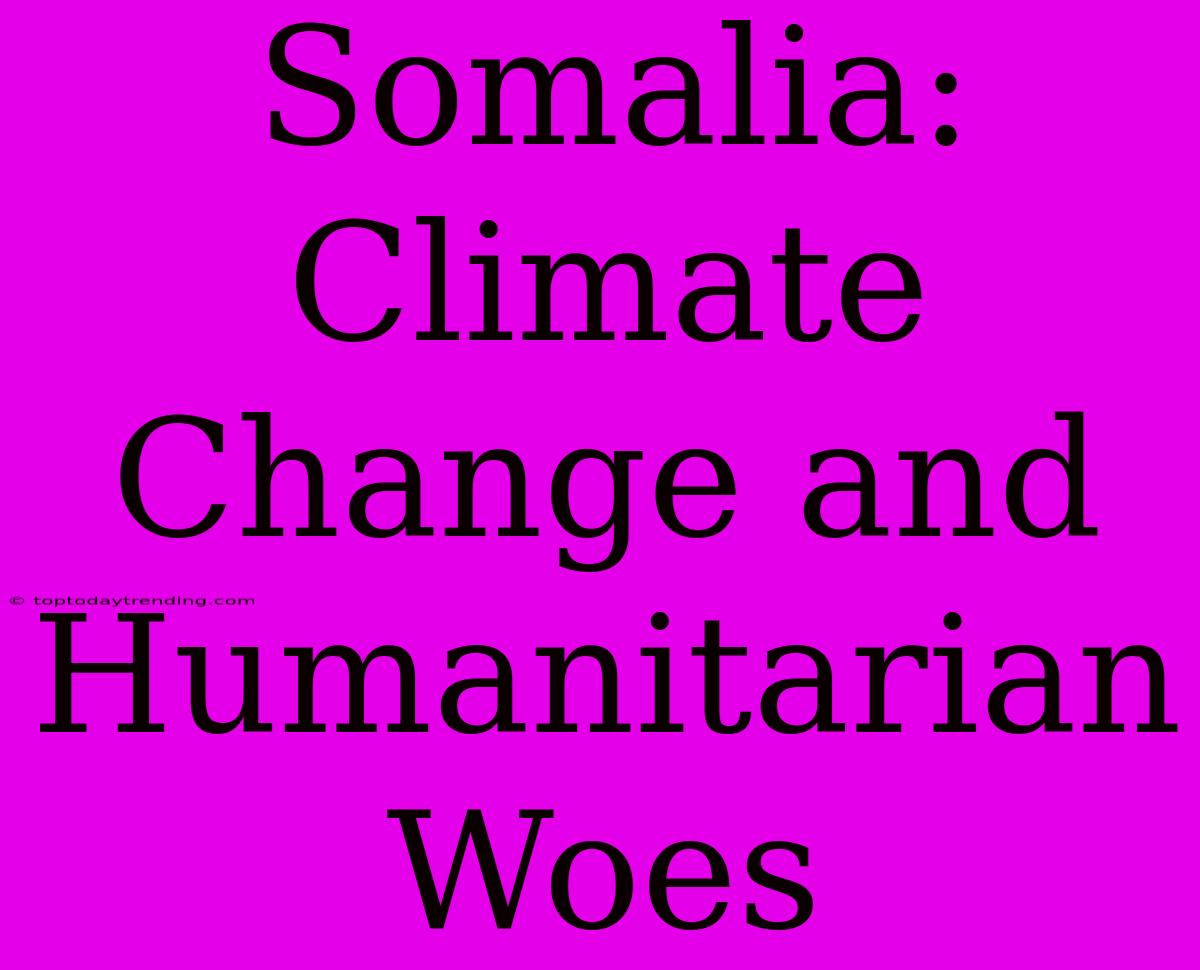Somalia: Climate Change and Humanitarian Woes
Somalia, a country already grappling with decades of conflict and instability, is now facing a formidable foe: climate change. This existential threat exacerbates existing vulnerabilities, pushing the country towards a humanitarian crisis of unparalleled proportions. The intertwined forces of drought, floods, and displacement are pushing Somalia towards a precipice, demanding urgent attention and action from the global community.
A Land of Extremes:
Somalia, located in the Horn of Africa, is inherently susceptible to climate variability. Its fragile ecosystem is teetering on the edge, with unpredictable rainfall patterns and recurring droughts plaguing its arid landscapes. The country relies heavily on rain-fed agriculture, leaving its food security highly vulnerable to erratic weather patterns.
Here's how climate change is impacting Somalia:
1. Drought and Famine:
- Increased frequency and severity of droughts: Climate change has intensified drought occurrences, leading to severe water scarcity, crop failure, and livestock deaths. The 2011 famine, which claimed the lives of over 250,000 people, was directly linked to a severe drought.
- Food insecurity and malnutrition: Droughts disrupt livelihoods, pushing communities into food insecurity and malnutrition, particularly affecting vulnerable populations like children, pregnant women, and the elderly.
- Displacement and migration: Desperate communities are forced to migrate, often in search of food and water, exacerbating existing humanitarian crises and placing immense strain on scarce resources.
2. Flooding and Erosion:
- Extreme rainfall events: While drought dominates the narrative, Somalia also faces the devastating consequences of flash floods, fueled by heavy rains. These events cause extensive damage to infrastructure, crops, and livestock, disrupting livelihoods and exacerbating food insecurity.
- Coastal erosion: Rising sea levels and storm surges are causing coastal erosion, threatening coastal communities and their livelihoods. This has a particularly detrimental impact on fishing communities, who are losing access to vital marine resources.
3. Conflict and Displacement:
- Competition for resources: The scarcity of resources caused by climate change intensifies existing conflicts over land, water, and grazing areas, escalating violence and displacement.
- Inter-clan tensions: Climate change often intensifies inter-clan tensions as communities compete for dwindling resources, leading to further conflict and displacement.
- Humanitarian crises: The combination of drought, floods, and displacement puts immense pressure on humanitarian relief efforts, leaving aid agencies struggling to meet the growing needs of a population facing a catastrophic situation.
4. Humanitarian Consequences:
- Health crisis: Climate change leads to the spread of diseases like cholera and malaria, exacerbated by poor sanitation and limited access to healthcare.
- Malnutrition and mortality: Food insecurity and malnutrition are major contributors to high child mortality rates in Somalia. Climate change compounds these problems, leading to a health crisis of immense proportions.
- Displacement and vulnerability: Climate-induced displacement further exacerbates existing vulnerabilities, creating new waves of refugees seeking refuge in already overcrowded and resource-scarce regions.
5. The Need for Global Action:
- International support and investment: Somalia desperately needs substantial international support to address the underlying causes of climate change and build resilience against its impacts. This includes financial aid, technical assistance, and capacity-building programs.
- Sustainable development strategies: Sustainable development plans focusing on climate-resilient agriculture, water resource management, and disaster preparedness are crucial for building a more resilient future.
- Early warning systems and preparedness: Investing in early warning systems and preparedness measures can help communities anticipate and mitigate the effects of climate change, saving lives and protecting livelihoods.
6. Investing in a Sustainable Future:
- Investing in climate adaptation: Addressing climate change in Somalia requires a shift from reactive emergency relief to proactive adaptation measures. This involves investments in drought-resistant crops, sustainable water management, and climate-resilient infrastructure.
- Supporting vulnerable communities: Empowering local communities through education, skills training, and access to resources is crucial for building resilience and fostering sustainable livelihoods.
The impacts of climate change in Somalia are a stark reminder of the vulnerability of the world's most vulnerable populations to the consequences of environmental degradation. As the world grapples with climate change, it is imperative to prioritize the needs of countries like Somalia, where the consequences of inaction are all too real. By embracing sustainable development strategies and prioritizing climate resilience, we can work towards a more equitable and sustainable future for all.

